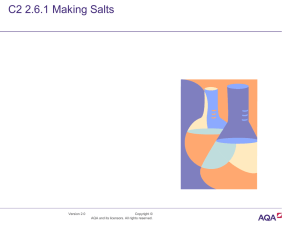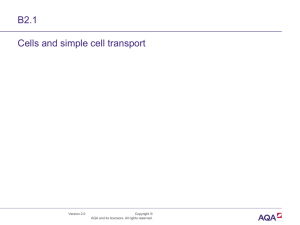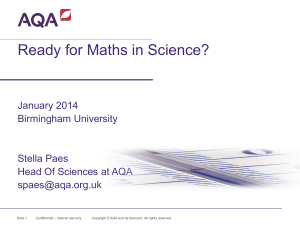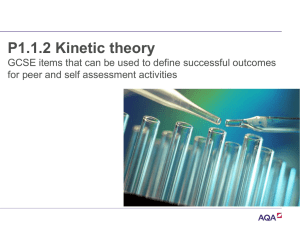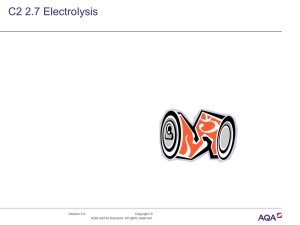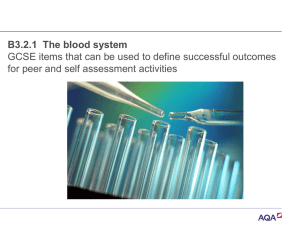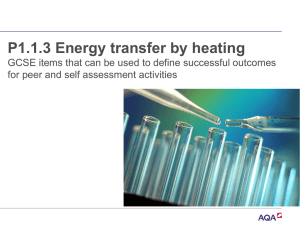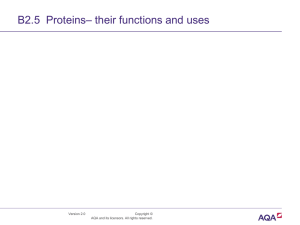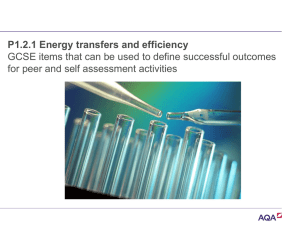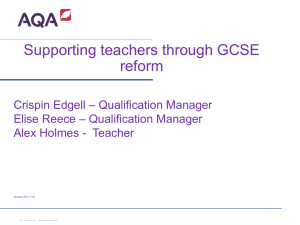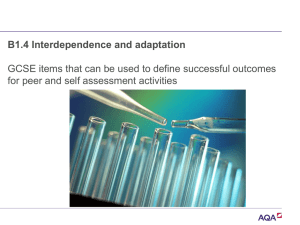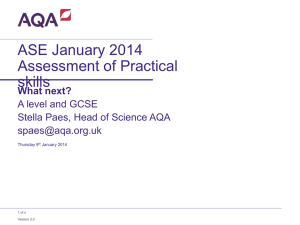Structuring talk session 3
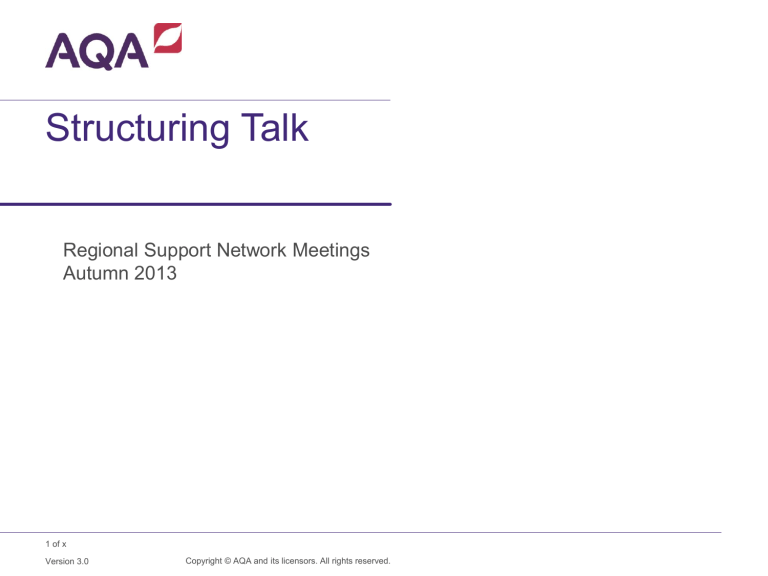
Structuring Talk
Regional Support Network Meetings
Autumn 2013
1 of x
Version 3.0
Copyright © AQA and its licensors. All rights reserved.
Connectivity
• This session focuses specifically on Speaking and Listening but it contains many concepts and ideas which connect with the other areas of literacy, namely reading and writing
• At earliest infancy speaking and listening come before reading and writing, and in most children S and L are a necessary precursor to R and W
• This session looks at how important it is to learn about ways in which formal/performed talk can be structured
• Students who understand structure in talk, should then be better able to detect structural mechanisms in texts that they read, and produce better structures in their own writing
2 of x
Copyright © AQA and its licensors. All rights reserved.
Form/Structure/Language
• These terms are notoriously ambiguous especially in their collocation
• Form here is the largest ‘unit’ and describes the overall type of spoken event, its generic features etc
• Structure here is the organisation and cohesion of the event, its internal workings
• Language here refers to its details, such as speech ‘syntax’ as well as vocabulary
3 of x
Version 3.0
Copyright © AQA and its licensors. All rights reserved.
Form
• All talk is performance to some extent whether the final category be
Presenting, Discussing, Role Playing
• In the classroom performance of Talk students need to know exactly what form it is they are meant to be performing and/or simulating, and how such forms ‘work’
• Performing to the class as a class is one type of audience, but there are many other types which can be simulated in order to help students.
4 of x
Version 3.0
Copyright © AQA and its licensors. All rights reserved.
Form
• It is not just Role-Playing which has simulation
• Individual presentations can have more sense of purpose and audience by having a form that is inventive
• Group work too can be within a narrative framework
5 of x
Version 3.0
Copyright © AQA and its licensors. All rights reserved.
Structure
• Of our three terms ( FSL) it is structure which tends to be undertaught …
• Yet it is structure which binds a text and gives it its impact
• Note the word text here – whether the student is talking or writing, many of the same structural ideas apply.
6 of x
Version 3.0
Copyright © AQA and its licensors. All rights reserved.
Some Structural Options
• The following slides suggest some areas of textual structure which are worth considering.
• Bear in mind too, though, that no amount of structural subtlety can work if the basic content and ideas lack substance
7 of x
Version 3.0
Copyright © AQA and its licensors. All rights reserved.
Chronology
• The management of narrative and time
• How are you going to sequence ideas in the story you tell in terms of time?
• What can be achieved by foregrounding and backgrounding certain ideas and events?
8 of x
Copyright © AQA and its licensors. All rights reserved.
Contrast
• This is the interplay of different ideas (or points of view)
• Do you set up the opposition from the start or do you give your text an element of surprise by holding it back?
• Do you leave the contrast (conflict) hanging or do you resolve it?
9 of x
Copyright © AQA and its licensors. All rights reserved.
Telling and Showing
• Do you headline your key point at the start, or do you lead up to it gradually?
• If starting with the key point in an abstract way, how do you then support it with detail?
• Is it possible just to show and leave your audience to ‘tell’ themselves?
10 of x
Copyright © AQA and its licensors. All rights reserved.
Obvious or Oblique?
• Think of all those adverts whose meaning and messages are not obvious from the start
• Do you come at your topic obliquely, anecdotally, or do you go directly to it?
11 of x
Copyright © AQA and its licensors. All rights reserved.
Some Structural Building Blocks
• Repetition
•
Enumeration
• Accumulation
• Allusion
• Metaphor
• Analogy
• Audience address
• etc
12 of x
Copyright © AQA and its licensors. All rights reserved.
Josie and Tashinga
• Look at clip 6 from Rochdale 2014
• How is the form dramatically established here?
• How do the two students establish a sense of contrast in their roles together?
• In what ways does the role play go through a series of stages ( or structure)?
• In what sense do they reach a conclusion?
13 of x
Copyright © AQA and its licensors. All rights reserved.
Peter
• Look at the clip of Peter in Rochdale DVD 2013.
• Role Playing. In this activity Peter performs a slot in the TV shorts series ‘If
I ruled the world’
• How is Peter helped by being given this form?
• What do you notice about the way he structures his talk?
14 of x
Copyright © AQA and its licensors. All rights reserved.
